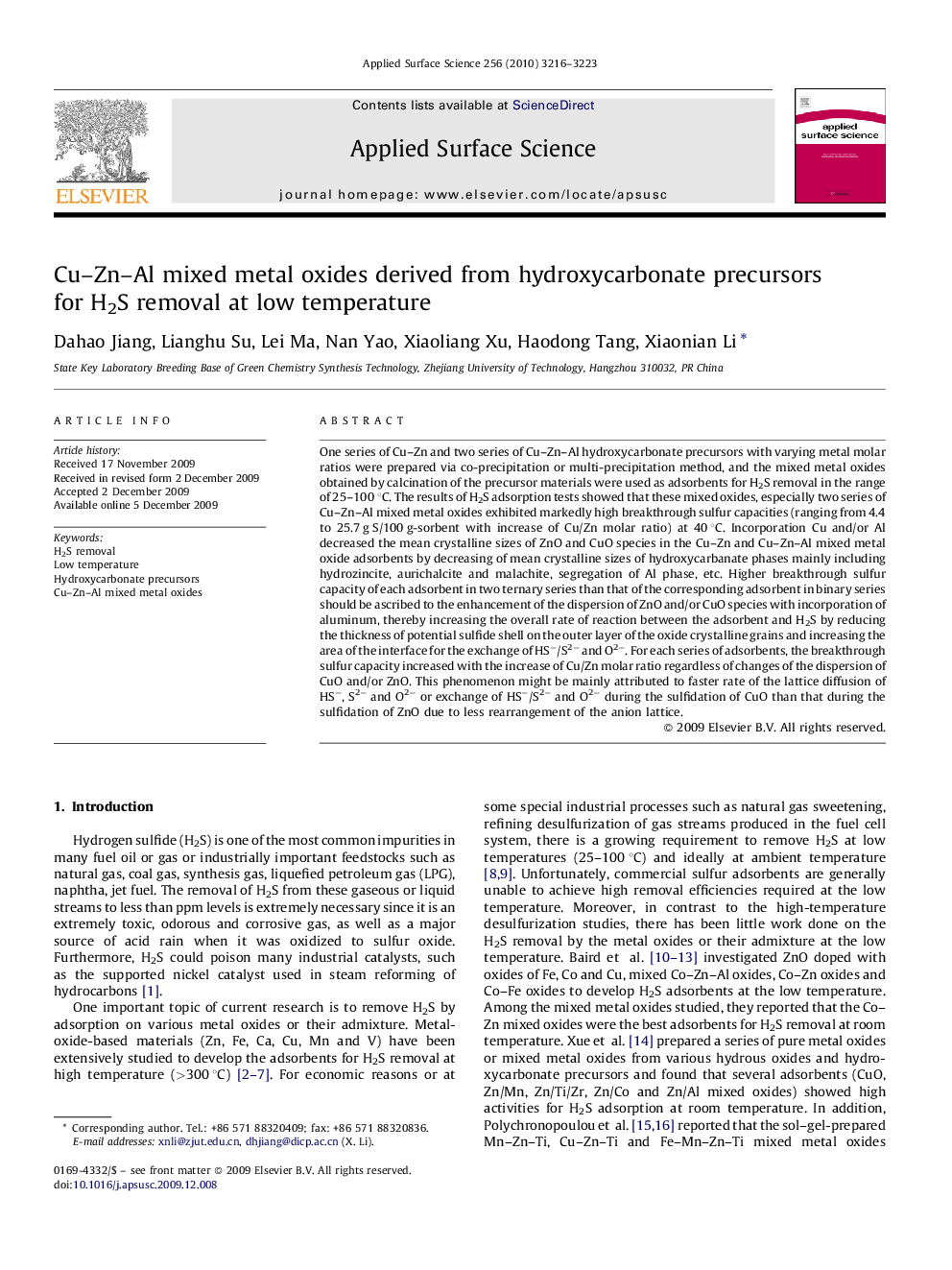| کد مقاله | کد نشریه | سال انتشار | مقاله انگلیسی | نسخه تمام متن |
|---|---|---|---|---|
| 5368768 | 1388409 | 2010 | 8 صفحه PDF | دانلود رایگان |

One series of Cu-Zn and two series of Cu-Zn-Al hydroxycarbonate precursors with varying metal molar ratios were prepared via co-precipitation or multi-precipitation method, and the mixed metal oxides obtained by calcination of the precursor materials were used as adsorbents for H2S removal in the range of 25-100 °C. The results of H2S adsorption tests showed that these mixed oxides, especially two series of Cu-Zn-Al mixed metal oxides exhibited markedly high breakthrough sulfur capacities (ranging from 4.4 to 25.7 g S/100 g-sorbent with increase of Cu/Zn molar ratio) at 40 °C. Incorporation Cu and/or Al decreased the mean crystalline sizes of ZnO and CuO species in the Cu-Zn and Cu-Zn-Al mixed metal oxide adsorbents by decreasing of mean crystalline sizes of hydroxycarbanate phases mainly including hydrozincite, aurichalcite and malachite, segregation of Al phase, etc. Higher breakthrough sulfur capacity of each adsorbent in two ternary series than that of the corresponding adsorbent in binary series should be ascribed to the enhancement of the dispersion of ZnO and/or CuO species with incorporation of aluminum, thereby increasing the overall rate of reaction between the adsorbent and H2S by reducing the thickness of potential sulfide shell on the outer layer of the oxide crystalline grains and increasing the area of the interface for the exchange of HSâ/S2â and O2â. For each series of adsorbents, the breakthrough sulfur capacity increased with the increase of Cu/Zn molar ratio regardless of changes of the dispersion of CuO and/or ZnO. This phenomenon might be mainly attributed to faster rate of the lattice diffusion of HSâ, S2â and O2â or exchange of HSâ/S2â and O2â during the sulfidation of CuO than that during the sulfidation of ZnO due to less rearrangement of the anion lattice.
Journal: Applied Surface Science - Volume 256, Issue 10, 1 March 2010, Pages 3216-3223